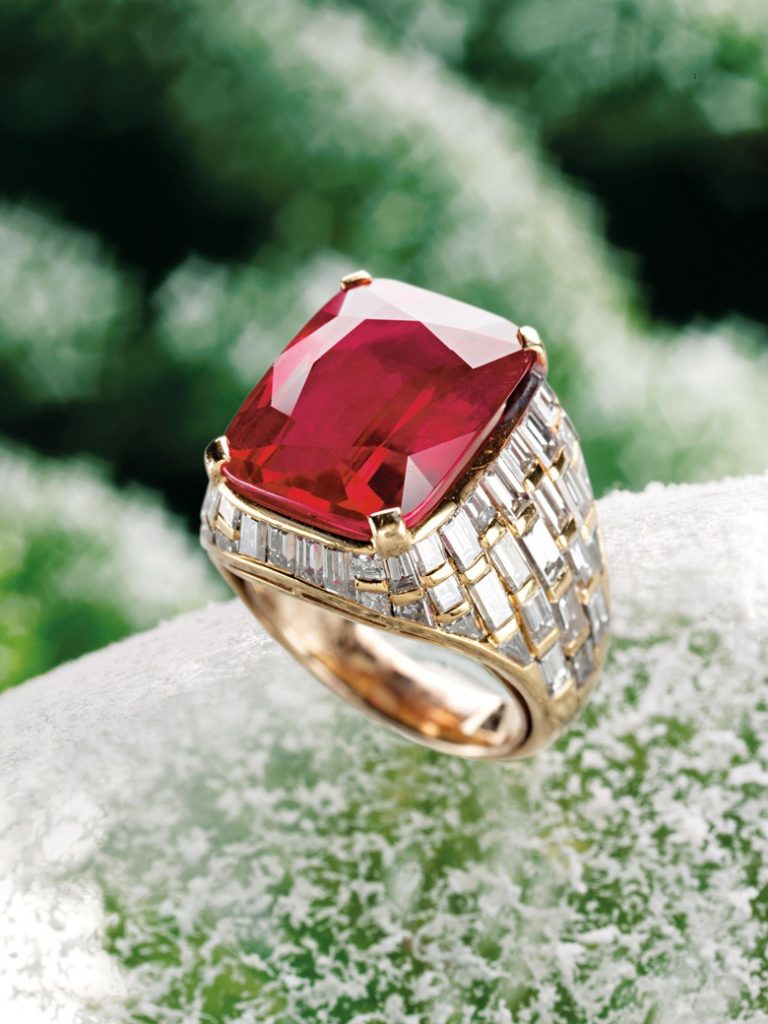
6: The Graff Ruby: A landmark moment for coloured gemstones
In late 2005, Senior International Jewellery Specialist Jean-Marc Lunel received a phone call from the Christie’s office in Monaco. He was told about a client who wanted a valuation of some jewels that were being held in a bank safe.
The collection comprised nine jewels — signed jewellery by Faraone, Van Cleef & Arpels, and three magnificent rings by Bulgari. The first ring was mounted with a sapphire from Burma, the second with a D-colour diamond, and the third with a Burmese ruby weighing 8.62 carats that showed no indications of treatment.

Burmese rubies of this size, and that have not been treated, are incredibly rare. Encountering one with a crystal of incredible purity, showing hardly any inclusions, and with a beautiful red hue, is a once-in-a-lifetime occurrence.
The nine pieces were offered by Christie’s in February 2006 in Saint Moritz, and the ruby was the talk of the town well before the auction viewing opened. Originally purchased at Bulgari in Italy in the 1960s, the ruby was estimated at $400,000-600,000.
In the saleroom it sparked a 20-minute bidding battle before finally being purchased for $3,637,480, at the time the highest price per carat ($421,981) ever achieved for a ruby. After the sale, the buyer’s identity was revealed and the ruby was renamed ‘The Graff Ruby’. The auction proved to be a landmark for coloured stones, underlining their value, importance and rarity.
Read – Part 1, Part 2, Part 3, Part 4, Part 5
Content courtesy: Christie’s
